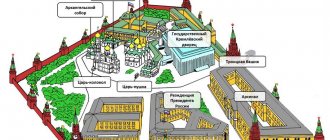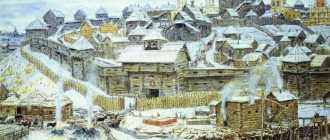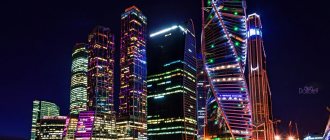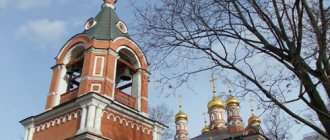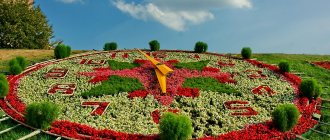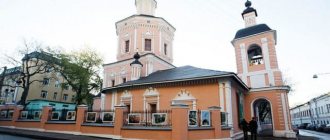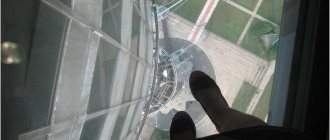On the Day of National Unity, the premiere of the new sound of the Kremlin chimes took place on Red Square in the presence of President Putin .
The bells on the Spasskaya Tower reproduced the melody of the Russian Anthem, which sounds 4 times a day - at 0 o'clock, at 6 am, at 12 and at 18 o'clock. Glinka’s melody four more times - at 3 a.m., 9 a.m., 3 p.m., and 9 p.m. “23 bells! Class!" — the president admired.
Konstantin Mishurovsky, the bell ringer of the Moscow Kremlin and the Cathedral of Christ the Savior , told AiF about what has changed in the sound of the bells on the main tower of the country
History of the Kremlin chimes
The history of tower clocks in the city of Moscow dates back to the distant year 1404, when they were first installed on the estate of the son of Prince Dmitry Donskoy, Vasily. The courtyard of the Grand Duke itself was located not far from the Annunciation Cathedral of the Kremlin.
These chimes were made by a Serbian clergyman - monk Lazar. A mechanical device in the shape of a human figure struck the bell every hour.
It is not known exactly when the clock with chimes appeared on the Spasskaya Tower. The tower itself was built by 1491 under the direction of the architect Piero Solari. This happened during the reign of Emperor Ivan III.
The first documentary evidence of the presence of a clock on the tower dates back to 1585: it mentioned certain watchmakers who, in addition to the Spassky clock, serviced the same mechanisms on the Tainitskaya and Trinity towers.
There are no descriptions of the chronometers, but the weight of the clock from the Spasskaya Tower was about 960 kilograms, as follows from the bill of sale, dated already 1624 (it indicates the sale of the clock to the Spassky Monastery from the Yaroslavl lands for 48 rubles).
A watchmaker, English mechanic Christopher Galovey, was invited to produce a new clock mechanism. Local blacksmiths were appointed as his assistants - master Zhdan with his son and grandson, whose names were Shumilo Zhdanov and Alexey Shumilov. 13 bells for the chimes were cast by Kirill Samoilov, a foundry master.
The new watch had no hands, the role of which was assigned to a rotating dial, which was divided into 17 parts.
The dial itself, weighing over 400 kilograms, was made of wooden boards and painted sky blue. There were hour divisions on it, which were designated in Slavic letters. For decoration, light-colored tin stars were added around the field.
Above the dial are the moon and sun painted in gold. The motionless arrow seemed to emanate from the ray of the last luminary.
The actual ringing of the chimes on the Spasskaya Tower was located even higher - in the figure of eight.
Appearance
The chimes are located on the eighth, ninth and tenth floors - the latter is located directly under the upper tent.
The height of the discs is more than 6 meters. The size of the numbers is 72 cm, the hand has a length of 2.97 meters, the minute hand is 3.3 m. The entire structure has a rather impressive weight - 25 tons.
The principle of operation is the same as that of conventional walkers: winding occurs by lifting three weights, the stroke is carried out by the movement of a pendulum. The interior consists of 4 shafts and is located on the ninth floor.
The shaft responsible for minutes goes down to the eighth floor, the musical component - to the tenth. The latter consists of a hammer and a dozen bells: the largest one is responsible for beating when the arrow points to 12, the rest - when the arrow points to 3, 6 and 9.
It is important to know: one of the main features is that the device is completely mechanical.
Melodies are played using a copper cylinder with a diameter of 2 meters and a weight of 2 quintals. The action is similar to music boxes: the surface of the cylinder has grooves and bulges. As they rotate, they press keys, from which cables stretch to the bells and the applied melody is played.
However, due to a significant lag from the desired tempo, the melodies are not always recognizable. Now the Russian anthem is played there (it plays every 6 hours, starting at 12 o’clock) and “Glory” from Glinka’s opera “A Life for the Tsar” (played every 6 hours, starting at 3 o’clock).
It is interesting to note that the onset of a new calendar period in the life of people and the country does not occur with the last chime, but with the first chime. By the time the ringing ends, a full minute has passed.
How did the chimes show the time and chime?
Such a strange dial, it turns out, indicated the course of day and night time, i.e. on the days of the summer solstice it was wound up for seventeen daytime and seven night hours. How did this happen?
The first sharp blow sounded at the moment when the first ray of sunlight fell on the walls of the Spasskaya Tower. Exactly the same blow announced the end of the day. Every hour a special bell was struck: the first hour - one strike, the second - two, and so on until the maximum possible number of 17. After that, the watchmaker climbed the tower and set the dial to 7 night hours. Thus, the timekeeper had to climb to the height twice.
Every 16 days, the number of day and night hours was adjusted, which in total amounted to the figure we are used to - 24.
The clock on the Kremlin's Spasskaya Tower delighted not only Russians, but even foreigners arriving in Moscow. Contemporaries wrote about this diva:
... a wonderful city iron clock, famous throughout the world for its beauty and design and for the sound of its large bell, which was heard ... more than 10 miles away.
In 1626, the clock on the tower burned down, but two years later it was restored by the same Galovey to serve until the end of the seventeenth century.
A new chronometer appeared under Peter the Great, who ordered the old-fashioned single-hand clocks to be destroyed and new ones with a 12-hour dial installed instead. The mechanism with a clock and music, which the sovereign himself bought for 42 thousand efimki in Dutch Amsterdam, was delivered to Moscow in thirty carts.
Yakim Gornel, a foreign watchmaker, was invited to install the chimes. He, together with nine Russian artisans, assembled and debugged the clock mechanism for 20 days. And finally, at 9 o’clock in the morning on December 9, 1706, people gathered at the tower heard the first ringing.
The chimes on the Spasskaya Tower chimed both the hours and the quarters. At a certain time, a melody was played, which was played by 33 musical bells. Unfortunately, the motive for that bell loss is not known.
Peter's clock served until 1737 , until it burned down in a fire. The capital was already in St. Petersburg at that time, and there was simply no hurry to repair the Moscow chimes.
In 1763, in one of the rooms of the Chamber of Facets, a large chiming clock made in England was found. They began to be mounted on the Spasskaya Tower only in 1767, for which master watchmaker Fatz (Fats) was sent from Germany. Together with the Russian artisan Ivan Polyansky, he launched them only three years later - in 1770. The music of the chimes was somewhat frivolous and was an excerpt from the German song “Ah, my dear Augustine.”
A fire in 1812 disabled the clock. The inspection of the mechanism was entrusted to Yakov Lebedev, who in February 1813 reported its significant damage and offered his services for restoration. Permission was obtained, but first they took a signature from the watchmaker that he would not permanently damage the device.
Two years passed and the chimes on the Spasskaya Tower sounded again, for which Lebedev was awarded the honorary and high title of “Master of the Spassky Clock.”
The current Kremlin chimes were installed in the period from 1851 to 1852. The mechanism was made by the Dutch - the Butenop brothers, whose workshops were located on Myasnitskaya Street, 43. For the euphony of the ringing and more accurate reproduction of the melody, 24 bells were added to the existing belfry, which were dismantled from the Trinity and Borovitskaya Kremlin towers.
The first melody of the new clock was supposed to be the anthem of the Russian Empire “God Save the Tsar!”, but Emperor Nicholas I did not give his permission for this, saying that “the chimes can play any songs except the anthem.” I had to record two melodies on the playing shaft - “March of the Preobrazhensky Regiment” (sounded at 6 and 12 o’clock) and “How Glorious is Our Lord in Zion” (3 and 9 o’clock), which did not change until 1917.
The installation of the Butenop brothers' clock mechanism required some restoration and repair work, which was led by the architect Pyotr Aleksandrovich Gerasimov. The pedestal for the clock, ceilings and stairs were made according to the drawings of the architect Konstantin Ton.
Master Fats
However, after some time, this clock also became dilapidated, and after the great fire of 1737 it completely fell into disrepair. True, by this time St. Petersburg had already become the capital, and therefore no one was in a hurry to repair them.
When Catherine II ascended the throne, she became interested in the Kremlin chimes. Later, Berlin watchmaker Fatz (Faz) would replace the clock with large English chimes discovered in the Chamber of Facets. Over the course of three years, under his leadership, Ivan Polyansky, a Russian master, will install them; in 1770, the work will be completed. Since the chief master was discharged from abroad, at his will the song O du lieber Augustin (“Oh, my dear Augustine”) sounded over the Kremlin. This is the only time in the history of the watch that it played a foreign melody.
Clock on the Spasskaya Tower after the October Revolution
On November 2, 1917, during an artillery shelling of the Moscow Kremlin, a shell hit the dial directly, breaking one of the hands and destroying their rotation mechanism. The clock has started!
Restoration work began only in August 1918 on the personal instructions of Lenin. At first we turned to the watch companies of Roginsky and Bure, but refused their services due to the unaffordable price. Nikolai Behrens, who worked as a mechanic in the Kremlin, decided to take on the job. He knew this mechanism, since his father worked as a master for the Butenop brothers and passed on his knowledge to his son.
Behrens began work together with the artist Mikhail Mikhailovich Cheremnykh, who began working on a new score for the chimes. With great difficulty, a one and a half meter pendulum weighing 32 kilograms was made to replace the damaged one, made of lead with gold plating.
In September 1918, the clock on the Spasskaya Tower was started again. The chimes sounded “Internationale” (at noon) and “You fell a victim in the fatal struggle” (at midnight).
In 1932, another reconstruction was carried out: the clock was repaired; replaced the dial; The numbers, rim, and hands were covered with gold, using a total of 28 kilograms of the precious metal. Only a fragment of “The Internationale” was left as the ringing, which sounded both 12 and 24 hours.
Since 1938, the melody of the chimes stopped sounding, leaving only hourly and quarterly short chimes. This decision was made by a special commission, which recognized the sound as unsatisfactory due to the wear of the mechanism.
In 1941, “The Internationale” was again played on the Spasskaya Tower using a special electro-mechanical drive. True, it did not last long.
In 1944, Stalin ordered the chimes to be set and the music of the new anthem of the Soviet Union, authored by Alexander Vasilyevich Alexandrov, to be set as a chime. The work did not go well, and the chimes of the Kremlin’s Spasskaya Tower fell silent for many years.
In 1974, a major restoration was carried out and the clock was stopped for 100 days. Then the entire clock mechanism was dismantled and restored, worn parts were replaced, an auto-lubrication system was installed, but the chimes never sounded - hands simply didn’t get around to them.
In 1991, a decision was made at the Plenum of the CPSU Central Committee to restore the Kremlin chimes, but the issue arose due to the lack of 3 bells necessary to play the USSR anthem.
The issue was returned to in 1995, but the Union had already collapsed, and the anthem of the new Russia became “Patriotic Song” by Mikhail Ivanovich Glinka.
In 1996, on the day of the inauguration of Boris Nikolayevich Yeltsin, after 58 years of silence, the chimes sounded again. The missing bells for tone were replaced by metal beaters. Now at midnight and noon the anthem was performed, and every quarter - a fragment of the opera “A Life for the Tsar” by the same composer Glinka.
The last restoration to date took place in 1999. In addition to the restoration work, the ringing of the previous anthem was changed to a new one, approved on December 8, 2000.
Reference from the past
Image taken during the USSR period
Located on the eastern wall of the Kremlin, it is almost the highest in height, second only to Trinity by 9 meters. Together with the star, the size of the building reaches 71 meters; it was built under Ivan III.
Its architect is the Italian Antonio Solari. At first the building was called Frolovskaya, because of the church of the same name, past which the only road to the main passage passed. The current name appeared later, almost a hundred years later.
The name was transferred to the gate from two icons of the Savior (Not Made by Hands and Smolensk), hung on top of the passage on both sides. However, later the entire structure was renamed. Important: only the icon of the Savior of Smolensk has survived, the second was lost during the USSR.
Less than a quarter of a century after its construction, a wooden bridge was stretched across the moat. Afterwards, the Englishman Galloway completed the upper floors and the hipped roof, which significantly “stretched” the appearance. Nude sculptures were installed as decorative elements - however, they were almost immediately covered up by sewing special caftans. A few years later they were badly damaged in a fire and had to be completely removed.
In the next century, the tent was crowned with an image of a double-headed eagle - it survived until the period of the USSR, being periodically updated. It was replaced by a Soviet star with five rays.
This is interesting : originally the star was a large, overly prominent figure, in the center of which was laid out a gilded image of a hammer and sickle made of gems.
View inside
Quite quickly the star had to be changed: the first option became very dim due to precipitation, and the size turned out to be too large. Instead, so-called “ruby” stars appeared, the size of which does not even reach 4 meters.
They have a frame made of stainless metal, flat edges are made of double-layer glass. Inside they work lamps with autonomous action, and there is a ventilation system. The stars standing on the “top of the head” are not the first: they have already been changed before.
This design has always occupied a special place in the life of Muscovites, being the main one among its “sisters”. Horses were not allowed to ride through its gates, but men on foot took off their hats (this was later fixed by decree) and bowed. Everyone passing by did this, regardless of religion, otherwise they would be punished.
Local legend confirms the sanctity of the main gate: when Emperor Bonaparte rode through the passage on horseback, an unexpected wind tore off his cocked hat. During the retreat, the French wanted to blow up the tower, a miracle happened - the wicks were extinguished, no damage was caused to the structure.
Through the described structure, criminals were led to the Place of Execution for execution, who prayed before the icons of the Savior. Also, kings and emperors followed through it on the way to the coronation site, and religious processions followed. Russians are used to seeing the Spasskaya Tower during the president’s speech, and they also give a countdown.
